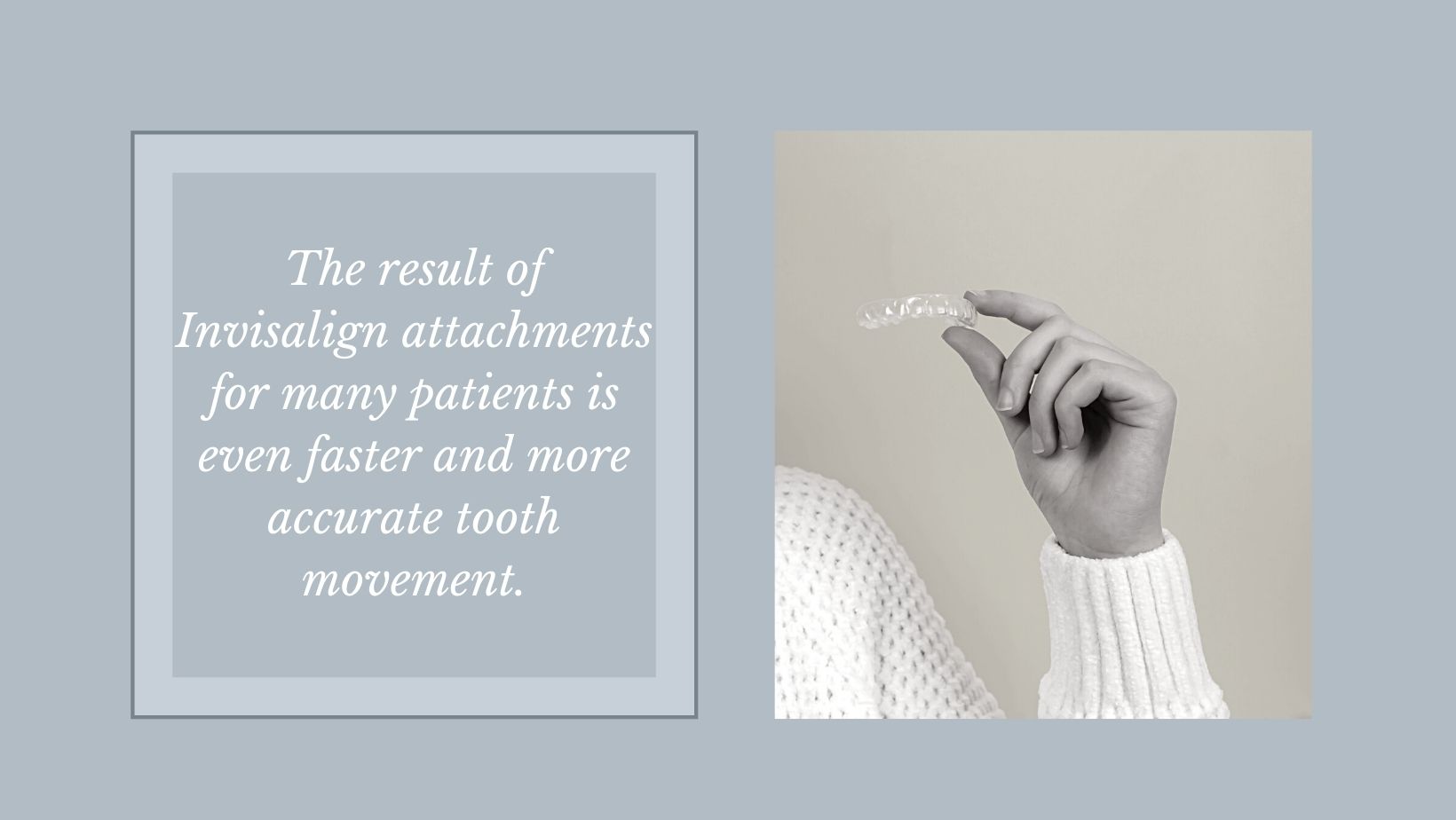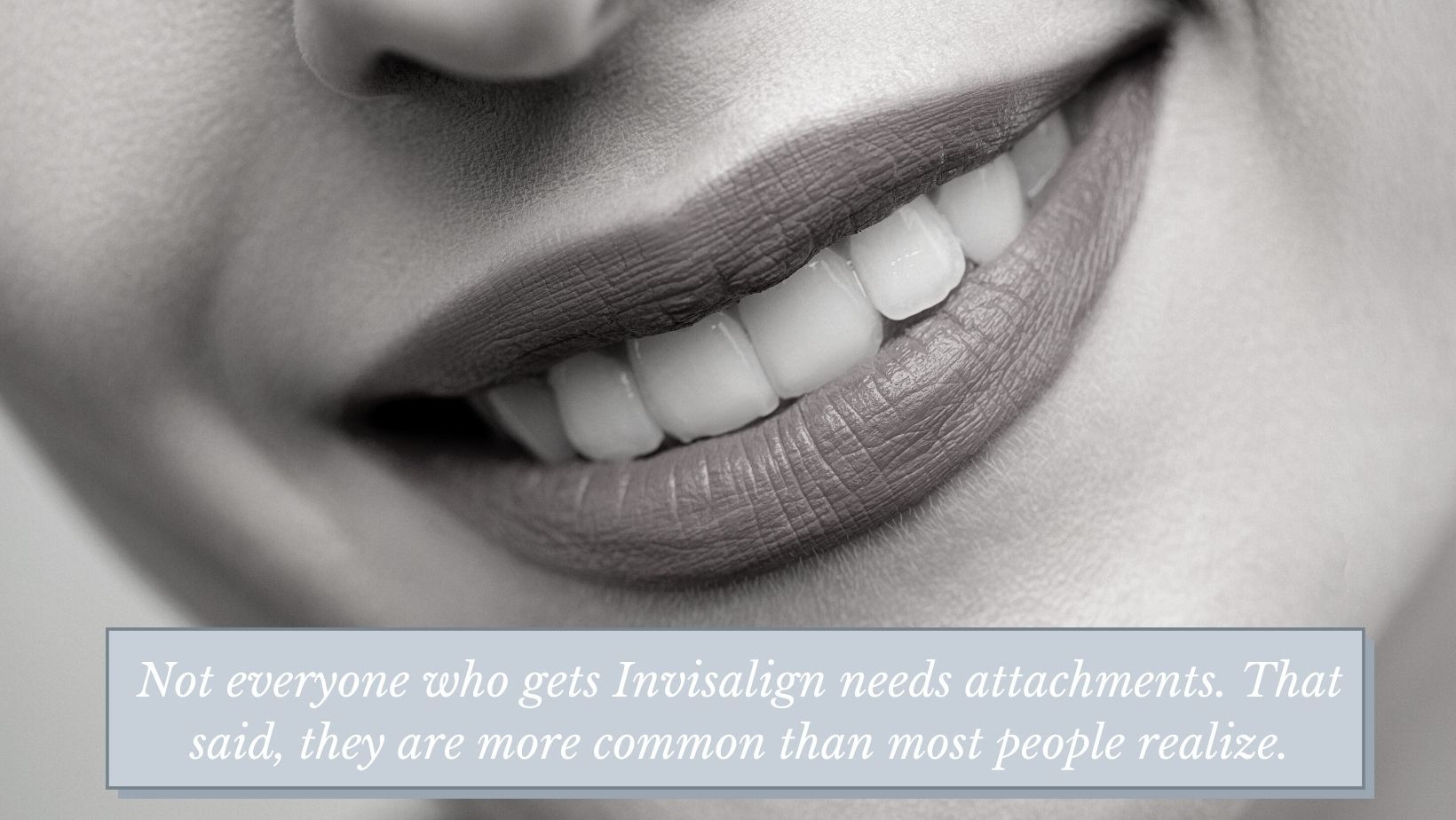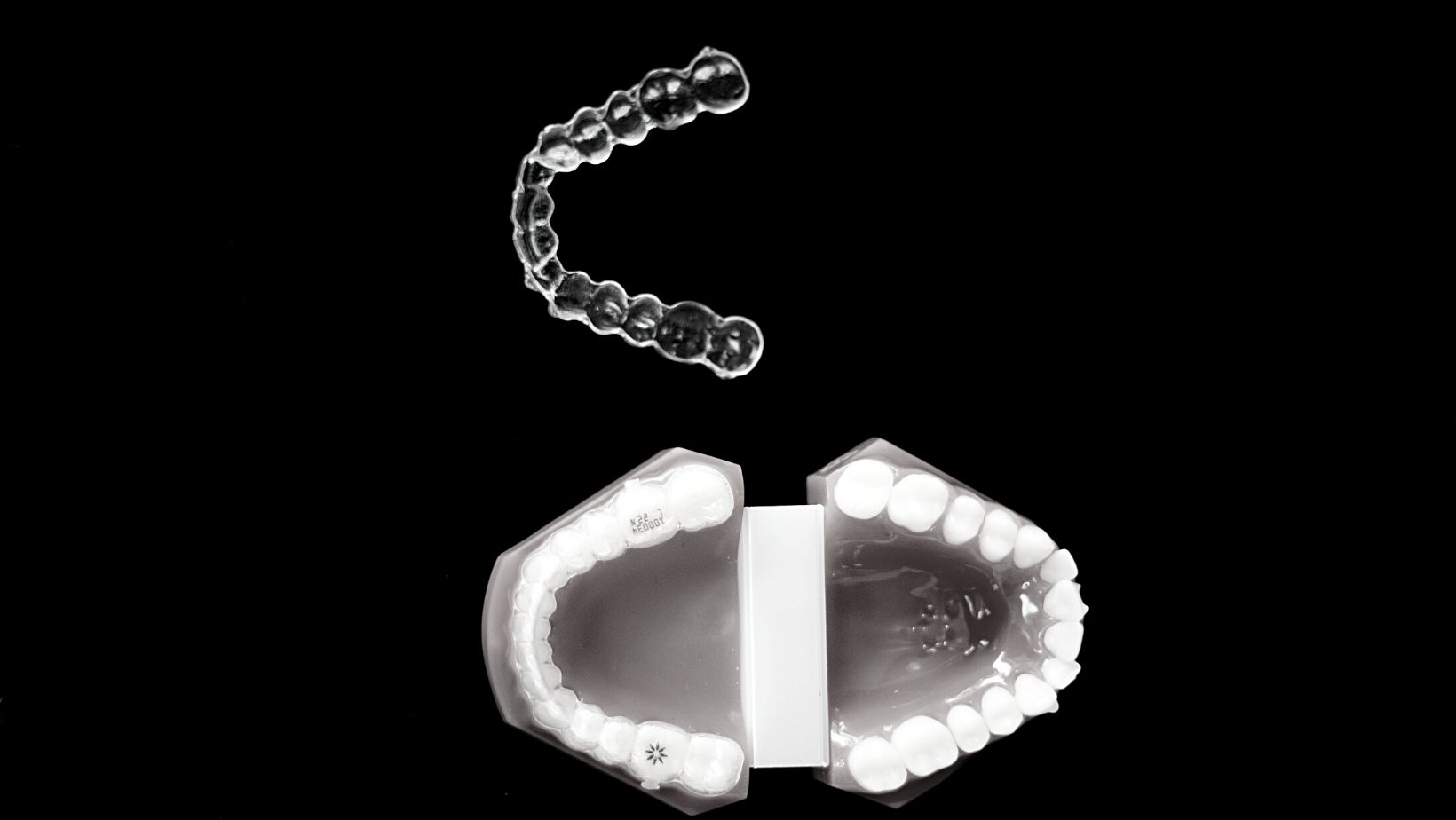Anyone considering Invisalign for straighter teeth has no doubt heard a lot about its advantages. But they may not have heard about Invisalign attachments, also called Invisalign buttons.
Two of the biggest selling points for Invisalign are that the clear plastic aligner trays are less noticeable than old-fashioned braces, and that you can take them out to eat whatever you want. Patients are sometimes surprised to hear that they might need attachments bonded to their teeth during treatment.
Why You Might Need Invisalign Attachments
Invisalign treatment often uses SmartForce® attachments. These are small, button-like pieces of composite resin. The dentist or orthodontist secures them on one or more teeth as part of the patient’s custom treatment plan.
The attachments come in different shapes and sizes, but are typically smaller than the brackets used for braces. The material creates a small bump colored to match the shade of the natural tooth so it blends in.
Tiny Invisalign attachments can assist with treatment in a few big ways. First, the bumps act as grips to anchor the aligner trays. The trays snap in over the attachments so they have a more snug and precise fit.
The buttons also add some leverage to the smooth surface of the tooth, giving the trays something to push against. Invisalign typically works better on teeth with mild to moderate crowding or crookedness. Aligner attachments can provide additional power to move teeth with more serious misalignment issues.
Invisalign is known for working fast. The result of Invisalign attachments for many patients is even faster and more accurate tooth movement.

How Noticeable Are Invisalign Attachments?
While Invisalign trays are in the mouth, it is unlikely that anyone will see the attachments beneath them. When the trays are removed, they might be more visible as little white bumps on the teeth.
The dentist or orthodontist will match the shade of the Invisalign button to the natural tooth color which helps make them obvious. Still, if they are on front teeth, people might see them up close. Keep in mind though, that Invisalign needs to stay in for 20 to 22 hours each day. It is unlikely that many people will see a patient without their trays.
Living With Invisalign Buttons
Getting Invisalign attachments is similar to getting a filling—but without any drilling! The dentist cleans the tooth, then sticks the button on using a non-toxic dental adhesive. It is not painful.
It is sometimes necessary to add more attachments in different places, but in most cases, patients keep the same attachments throughout their entire treatment. When treatment is complete, the dentist applies a solution that dissolves the glue, pops off the attachment, and buffs the tooth to remove any residue.
The attachments themselves do not hurt. When a patient takes out their Invisalign aligners, however, they might notice them rubbing against the lips or the inside of the cheeks. The buttons themselves are not sharp; so after a few days, the patient gets used to the feeling.
One thing that patients need to be careful of when they have attachments is removing and replacing their Invisalign trays. Because the fit is more snug, it can be easier to accidentally crack or break the trays. Especially when taking them out, it is important to be gentle and not force them off the teeth. Watch this video to learn the best way to remove Invisalign aligners.
Taking care of Invisalign attachments is no different than the rest of the dental hygiene routine. Because they stick out from the tooth’s surface, food might collect around them, so normal brushing and flossing is necessary to keep them clean. It is also a good idea to avoid things like biting into an apple or chewing hard things like ice. The force could dislodge an attachment.
Invisalign trays have special requirements for cleaning, but Invisalign attachments can be treated just like teeth. Following normal oral hygiene practices is sufficient to avoid damaging or staining them. And it is fine to use teeth whitening products during Invisalign treatment. The attachments will hold up just fine.
Do I Have to Get Invisalign Attachments?
Not everyone who gets Invisalign needs attachments. That said, they are more common than most people realize. One reason people might resist having them put on is that they think they can save some money.
The average cost of Invisalign is $3000 to $8000. Several factors account for the price variation, such as the complexity of the straightening plan, the length of treatment, and the region where the patient lives. The need for Invisalign attachments can factor in too.

If cost is a concern, can a patient decide not to get attachments? They can, but it is not recommended. If the customized treatment plan created by the dentist or orthodontist includes them, there is a reason. Without the buttons, teeth may not move as quickly or effectively. Treatment can end up taking much longer—which can increase the cost too.
Unfortunately, patients can not request which teeth will get the attachments either. For example, those worried about how they will look might still need them on the front teeth. Remember, though, that not every tooth will have an attachment. And when the Invisalign trays are in (which is most of the time) the attachments are hidden.
Faster, More Precise Straightening With Invisalign Attachments
Not everyone who wants Invisalign realizes that they might need attachments too. Even with these buttons, Invisalign is still less noticeable than braces.
Invisalign’s popularity continues to grow as a great way to straighten teeth. For those who do not want braces, Invisalign attachments are not a big deal. They are tiny, blend in with the teeth, and most importantly, help the trays do their job even faster and better than ever.
Are you interested in straighter teeth with Invisalign? Use our online tool to find a dentist or orthodontist who provides them near you.


